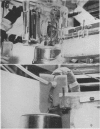Abstract
The effect of metabolic inhibition of the sink tissues on translocation of 14C-labeled photosynthate was studied by cooling part or all of the sink region in a translocating sugar beet plant (Beta vulgaris L. var Klein Wanzleben).
When the sink region was cooled, 4 phases were observed: a temporary decline, a period of translocation at the pre-treatment rate, a period of decline, and a new steady rate at 35 to 45% of the original rate. The new rate persisted throughout 26 hours of cooling.
Cooling half the blade of a developing leaf caused a decline in translocation to the uncooled half. When a portion of the beet was cooled, translocation to a developing leaf located above the supply leaf node increased 30%.
Translocation into the treated region recovered rapidly and completely when cooling ceased indicating that cooling had not caused serious damage to tissues. Enhancement of the proportion of 14C as sucrose in the cooled portion of the sink leaf as compared with the corresponding warm side indicated that sucrose is the chief species of translocate molecule arriving in the sink.
The data suggest that the translocation process includes active uptake into storage and growing areas.
Full text
PDF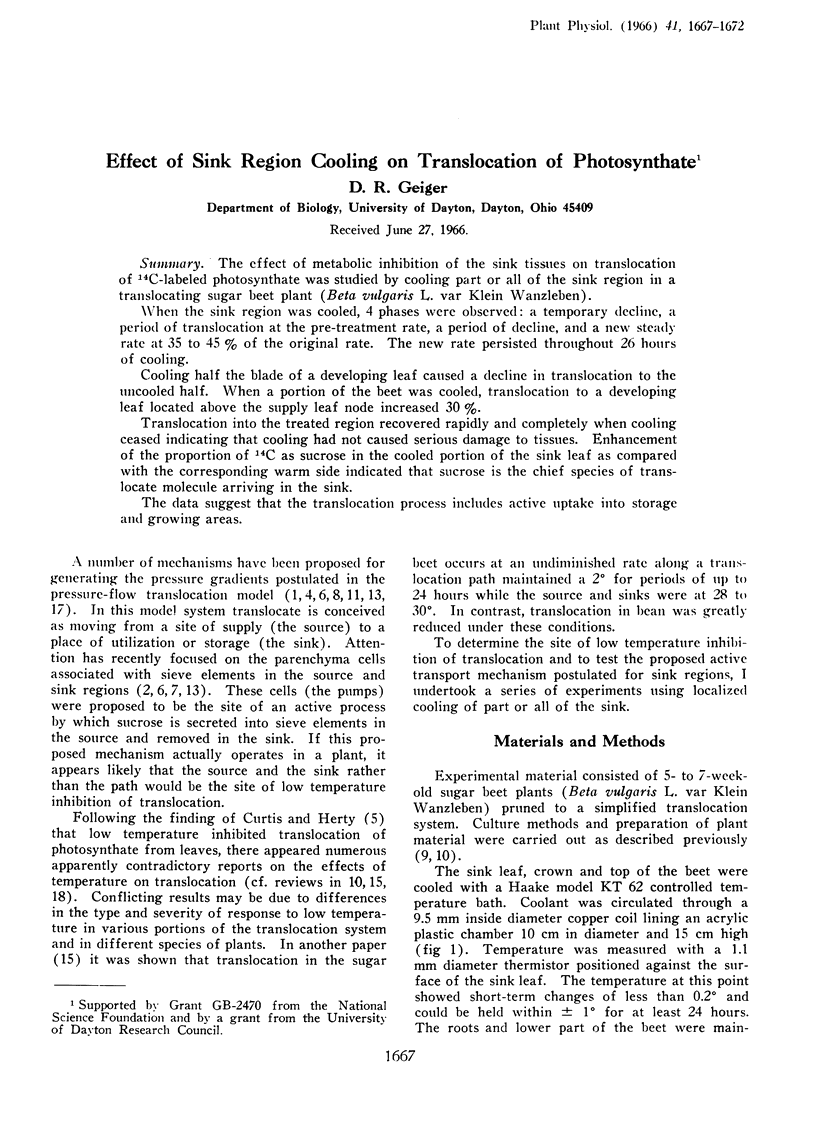
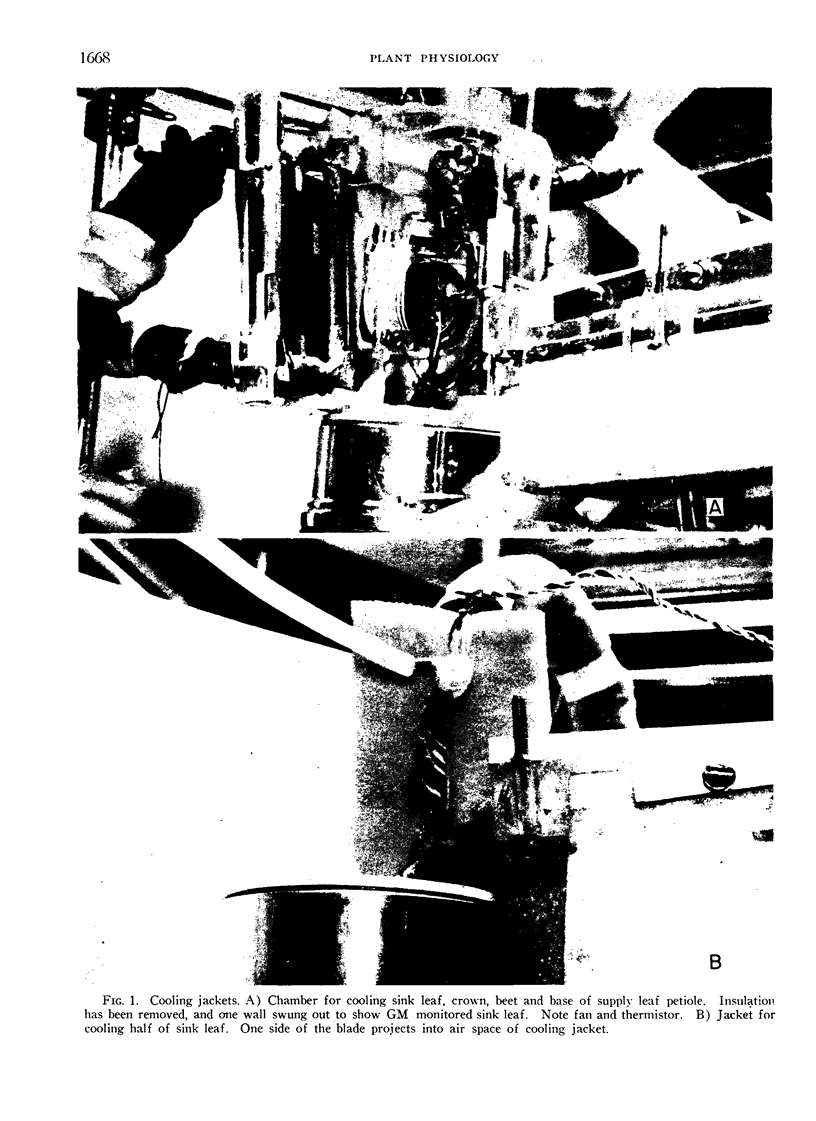
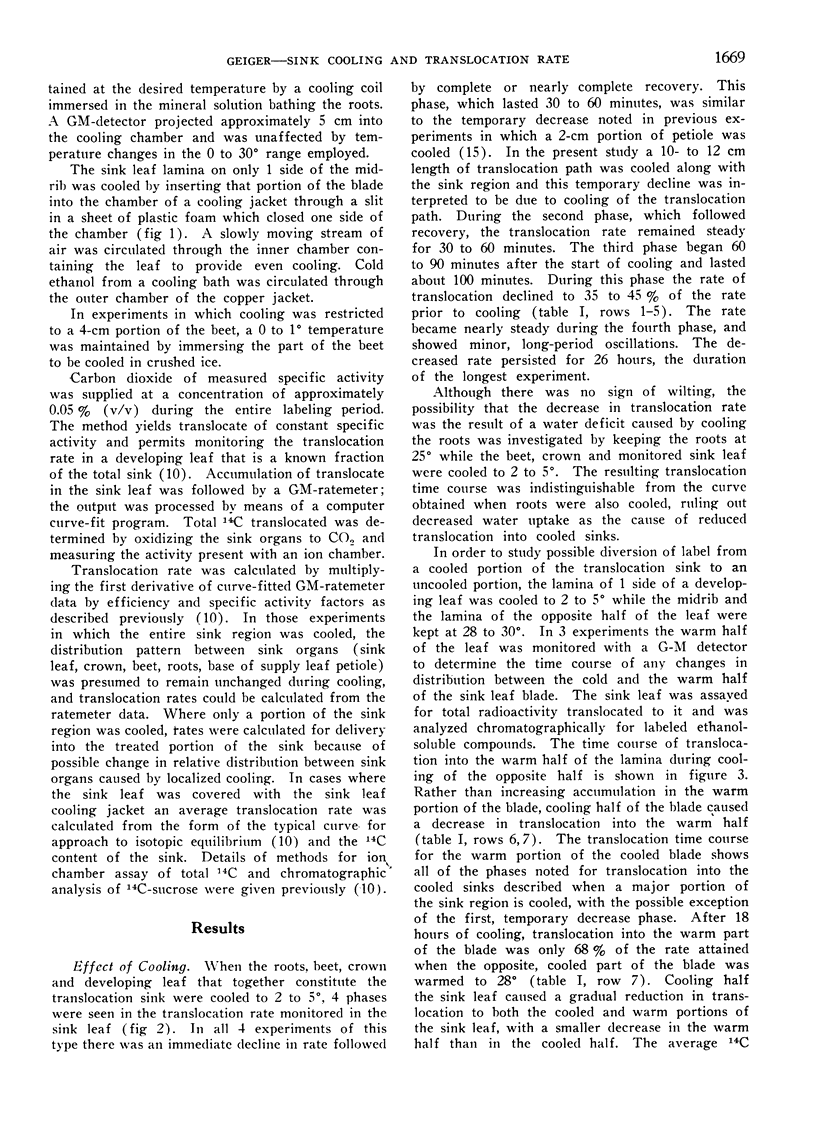
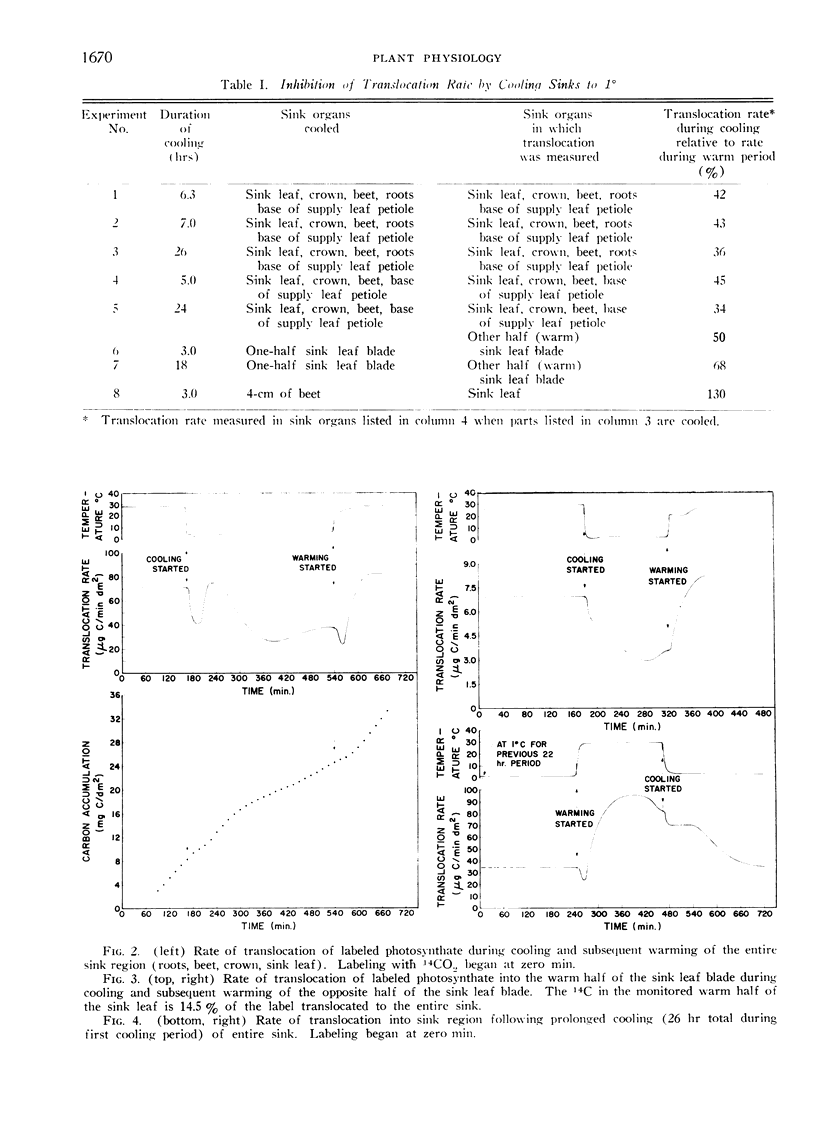
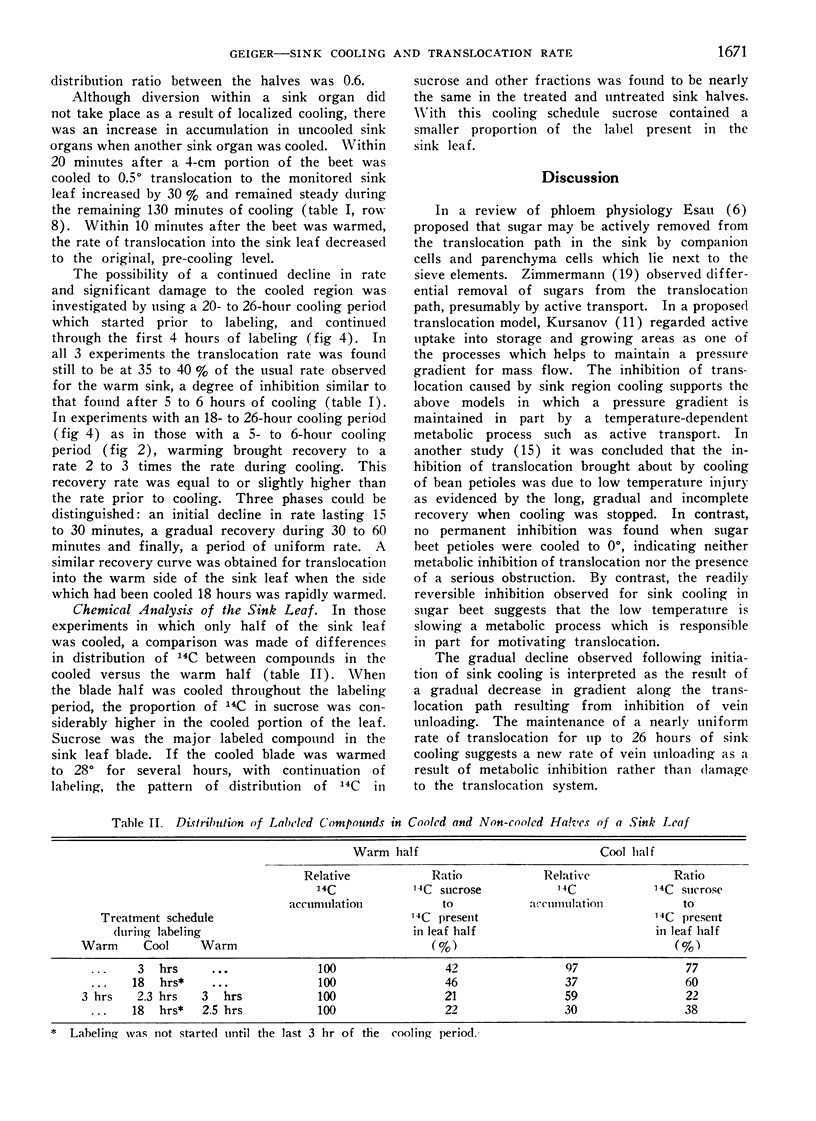
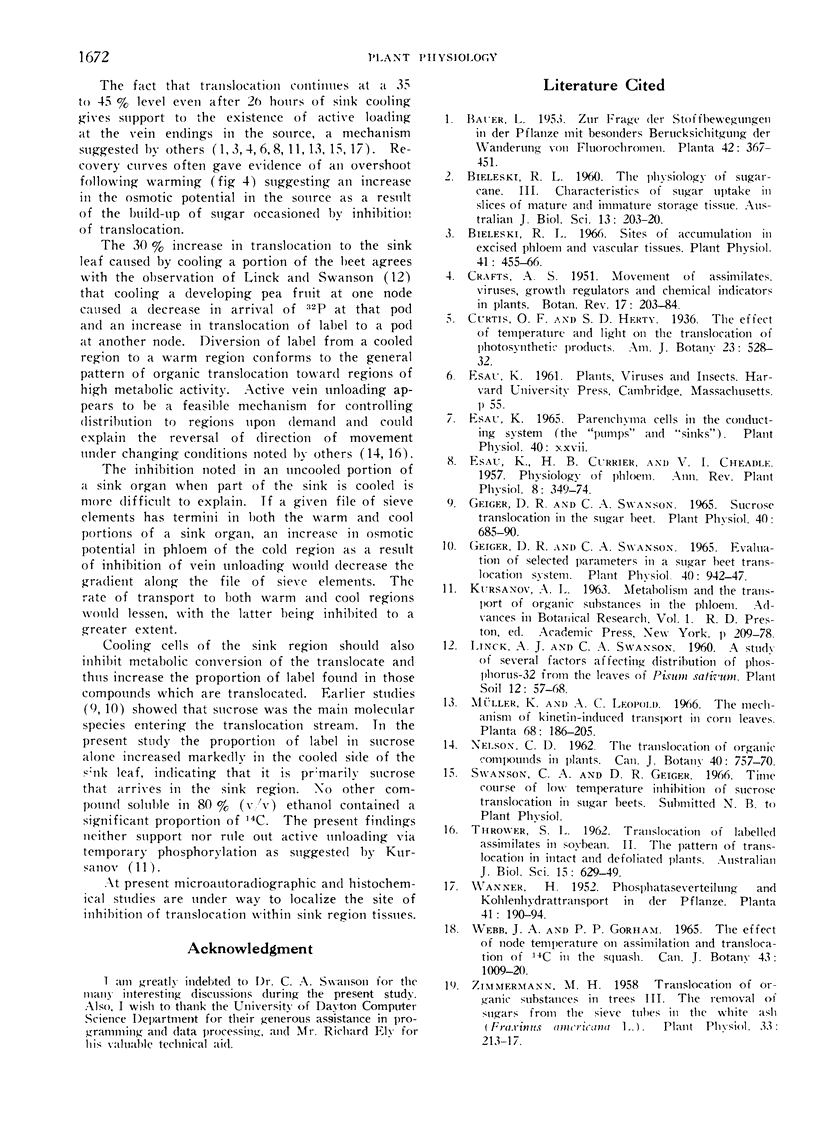
Images in this article
Selected References
These references are in PubMed. This may not be the complete list of references from this article.
- Geiger D. R., Swanson C. A. Evaluation of Selected Parameters in a Sugar Beet Translocation System. Plant Physiol. 1965 Sep;40(5):942–947. doi: 10.1104/pp.40.5.942. [DOI] [PMC free article] [PubMed] [Google Scholar]
- Geiger D. R., Swanson C. A. Sucrose Translocation in the Sugar Beet. Plant Physiol. 1965 Jul;40(4):685–690. doi: 10.1104/pp.40.4.685. [DOI] [PMC free article] [PubMed] [Google Scholar]



